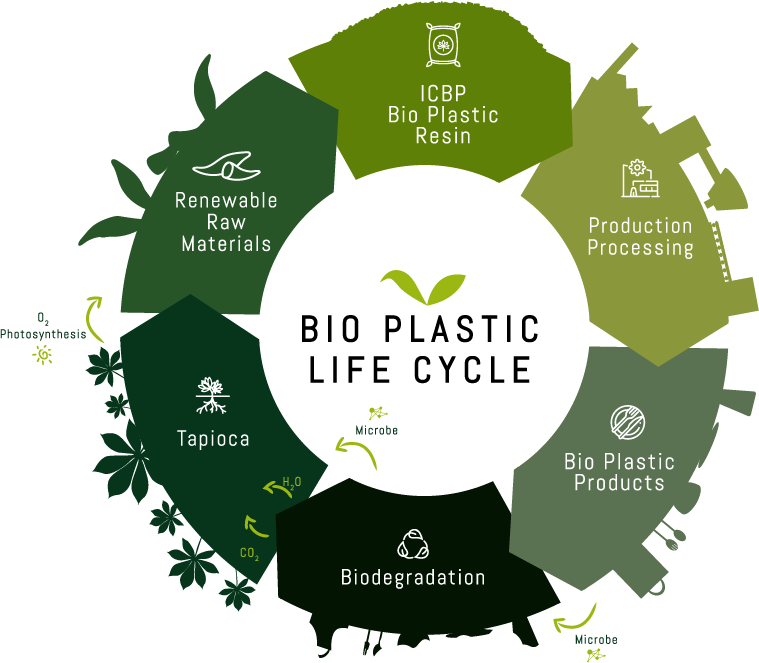Bio Plastics
The Life Cycle of BioPlastics

The life cycle of bioplastics generally involves several stages, including raw material production, manufacturing, use, and end-of-life options. Here's an overview of the bioplastic life cycle:
Raw Material Production: The life cycle begins with the cultivation or extraction of renewable feedstocks, such as corn, sugarcane, or cellulose from wood pulp. These feedstocks are chosen for their ability to be converted into bioplastics.
Conversion to Bioplastic: The raw materials undergo various processes, such as fermentation or chemical synthesis, to convert them into monomers or polymers suitable for bioplastic production. This step may involve the use of enzymes or bacteria to break down the feedstocks and produce bioplastics.
Manufacturing: The bioplastic materials are then transformed into products through manufacturing processes, including extrusion, injection molding, or blow molding, depending on the desired shape and application. These processes are similar to those used for traditional plastics.
Use: Bioplastics can be used in a wide range of applications, such as packaging materials, disposable cutlery, food containers, textiles, and more. During this stage, the bioplastics serve their intended purpose, providing functionality similar to conventional plastics.
End-of-Life Options: After their use, bioplastics can follow different end-of-life paths depending on their composition and the available infrastructure:
a) Composting: Some bioplastics are designed to be compostable, meaning they can be broken down into organic matter, carbon dioxide, and water under specific conditions. These compostable bioplastics can be disposed of in industrial composting facilities, where they undergo controlled decomposition.
b) Recycling: Certain types of bioplastics can be recycled through existing recycling processes. These bioplastics are typically labeled with a recycling symbol and can be mixed with traditional plastics in recycling streams.
c) Incineration and Energy Recovery: When composting or recycling are not feasible, bioplastics can be incinerated in waste-to-energy facilities, where they contribute to the generation of heat or electricity.
